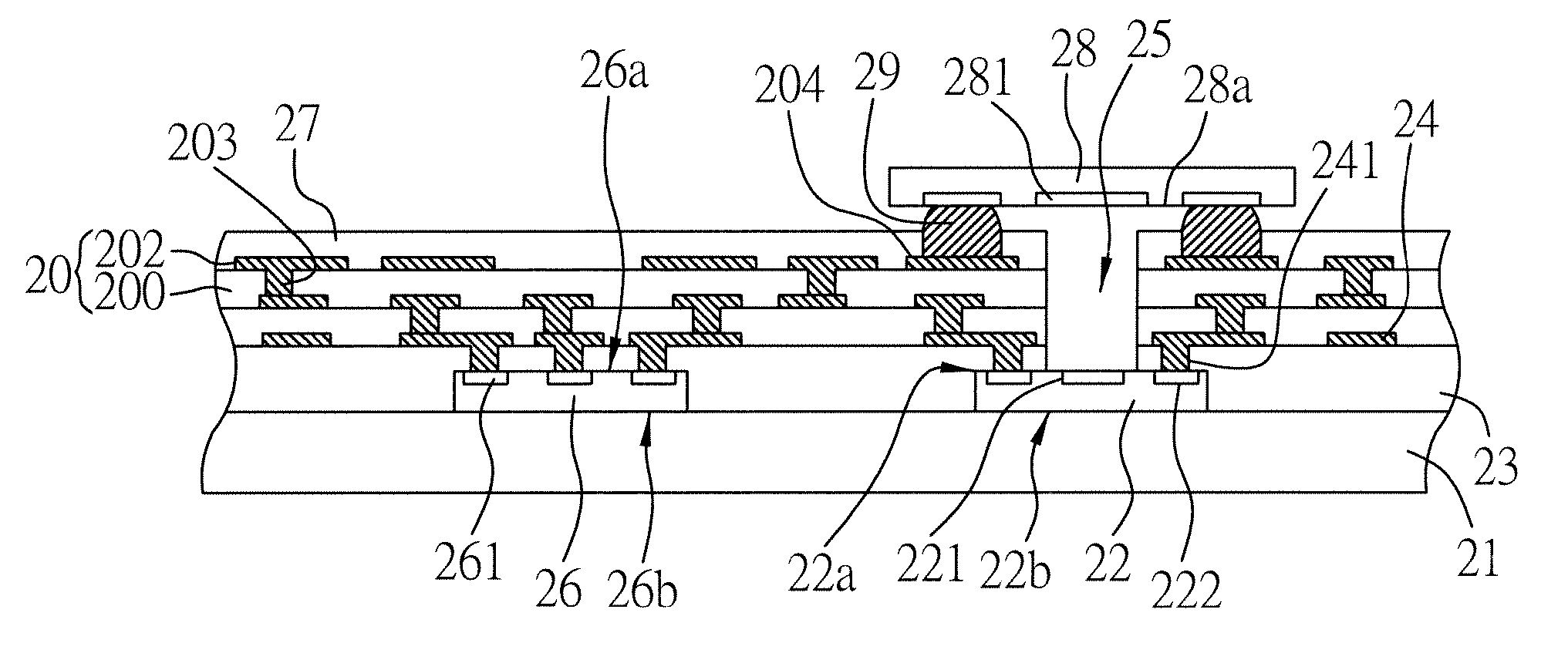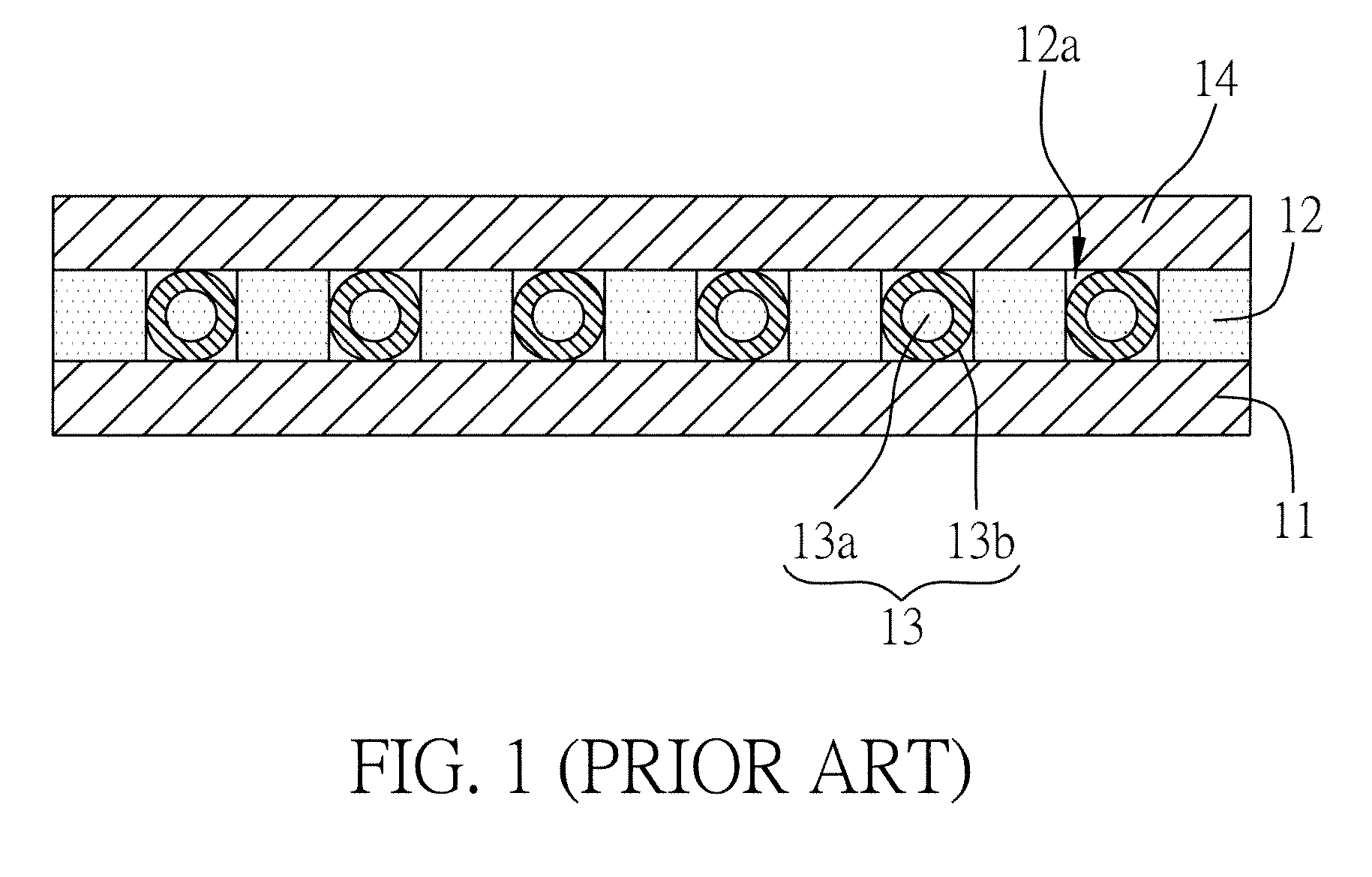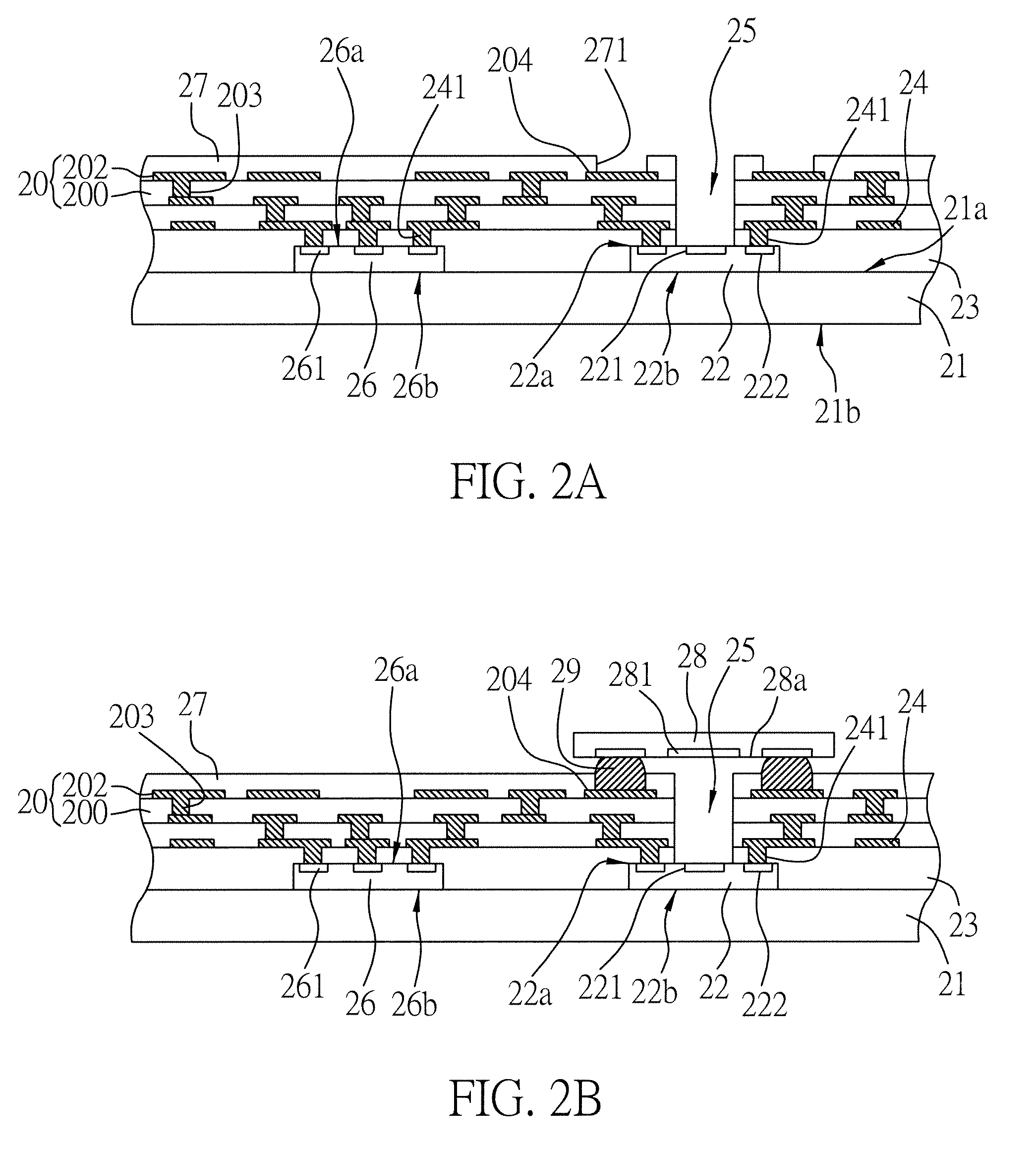Circuit Board Structure of Integrated Optoelectronic Component
- Summary
- Abstract
- Description
- Claims
- Application Information
AI Technical Summary
Benefits of technology
Problems solved by technology
Method used
Image
Examples
first embodiment
[0036]FIGS. 2A and 2B show the cross-sectional views of the circuit board structure of integrated optoelectronic component of the present invention according to the present invention.
[0037] As shown in FIG. 2A, the circuit board structure of integrated optoelectronic component in this embodiment is composed of a supporting structure 21 that has a first surface 21a and a second surface 21b opposite to the first surface; an optical transceiver 22 that has at least one active surface 22a and an inactive surface 22b opposite to 22a; the inactive surface 22b of optical transceiver 22 is disposed on the first surface 21a of supporting structure 21, an optical active region 221 and a plurality of electrode pads 222 are formed on active surface 22a of optical transceiver 22; a dielectric layer 23 that is formed on the first surface 21a of supporting structure 21 and on active surface 22a of optical transceiver 22; a circuit layer 24 that is formed on the surface of dielectric layer 23, and ...
second embodiment
[0046]FIG. 3 is a cross-sectional view showing the circuit board structure of integrated optoelectronic component of the present invention according to the present invention; it differs from the previous embodiment in that the supporting structure 31 can be either a circuit board or an insulating board, and an opening 310 is formed in supporting structure 31, with a heat slug 312 formed in opening 310. The optical transceivers 22 and 28, as well as semiconductor component 26 are disposed on heat slug 312, so that the heat generated from running optical transceivers 22 and 28 or semiconductor component 26 can be dispelled outwards, thereby raising the heat dissipation function of the circuit board structure of integrated optoelectronic component and protecting the components from getting damaged.
The Third Preferred Embodiment
third embodiment
[0047]FIGS. 4A and 4B are schematic cross-sectional views illustrating the circuit board structure of integrated optoelectronic component of the present invention according to the present invention.
[0048] As shown in FIG. 4A, the circuit board structure of integrated optoelectronic component in this embodiment is composed of: a supporting structure 41 that has a first surface 41a and a second surface 41b, the supporting structure 41 can either be metal boards, ceramic boards, insulating boards, organic circuit boards, or the randomly stacked structure made of the previous materials, an opening 410 that penetrates the first surface 41a but not the second surface 41b is formed in supporting structure 41; at least one optical transceiver 22 that has an active surface 22a and an inactive surface 22b opposite to 22a, and the inactive surface 22b of optical transceiver 22 is disposed in opening 410 of supporting structure 41 by an adhesive layer (not shown in the figure); at least a semic...
PUM
 Login to View More
Login to View More Abstract
Description
Claims
Application Information
 Login to View More
Login to View More - R&D
- Intellectual Property
- Life Sciences
- Materials
- Tech Scout
- Unparalleled Data Quality
- Higher Quality Content
- 60% Fewer Hallucinations
Browse by: Latest US Patents, China's latest patents, Technical Efficacy Thesaurus, Application Domain, Technology Topic, Popular Technical Reports.
© 2025 PatSnap. All rights reserved.Legal|Privacy policy|Modern Slavery Act Transparency Statement|Sitemap|About US| Contact US: help@patsnap.com



